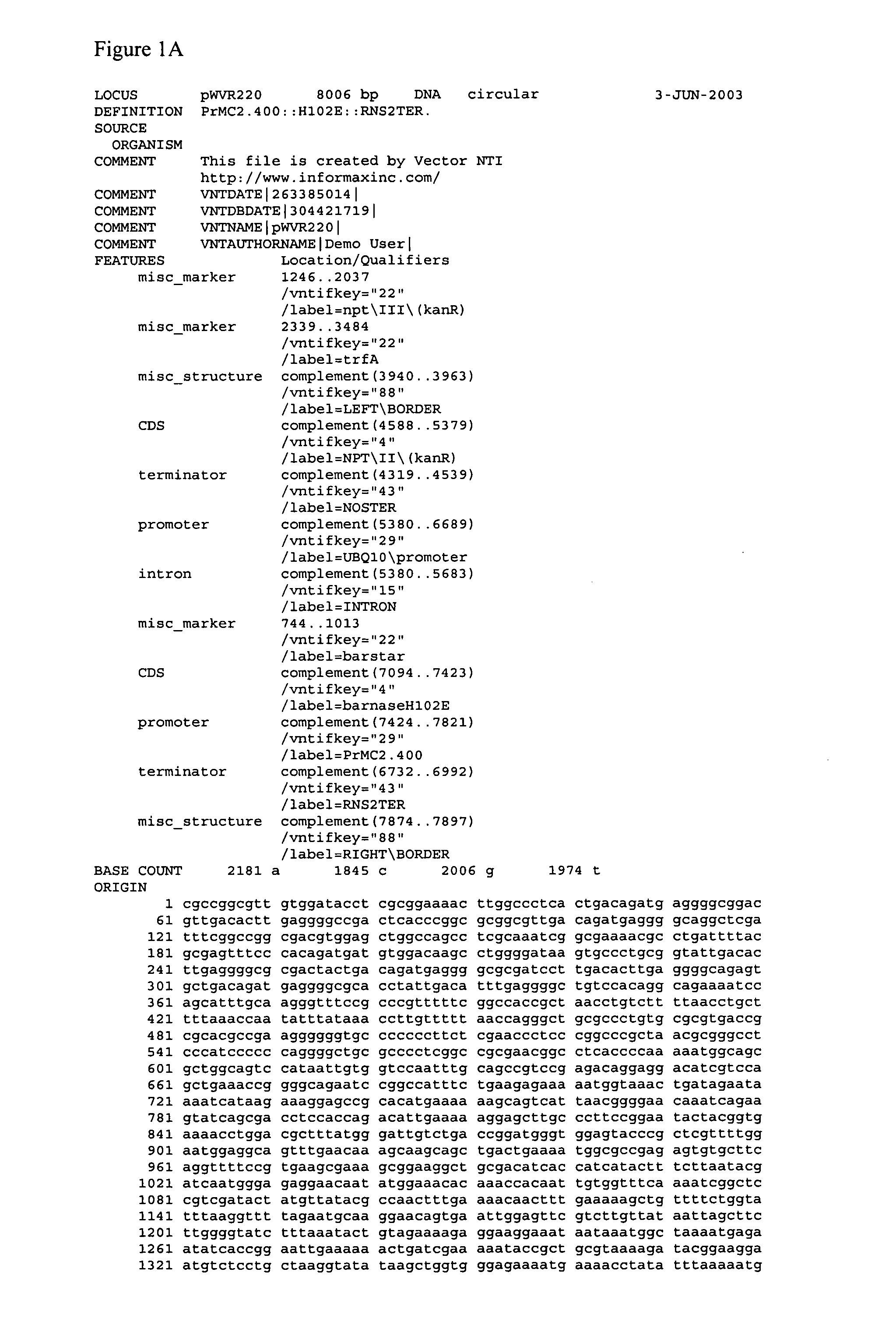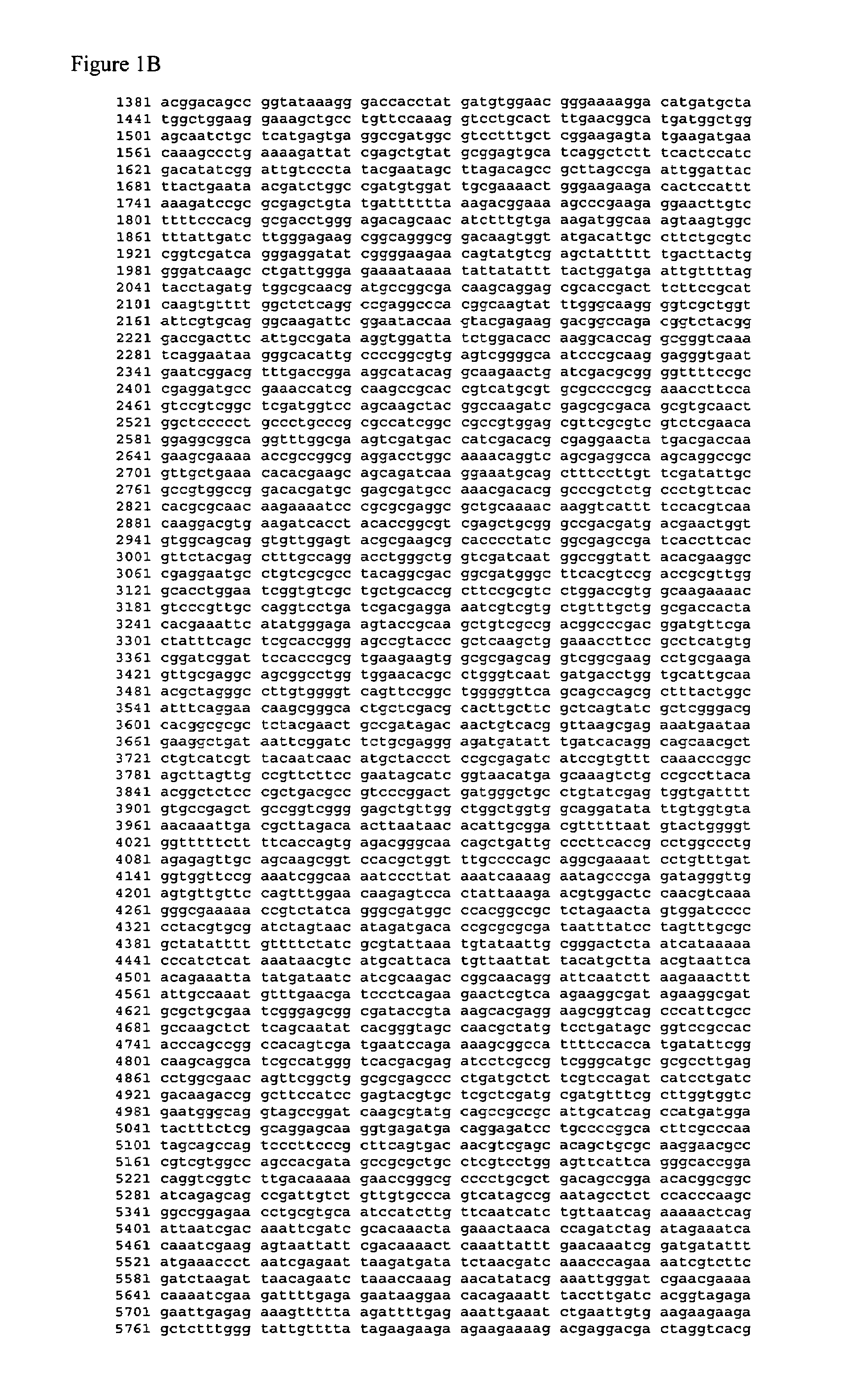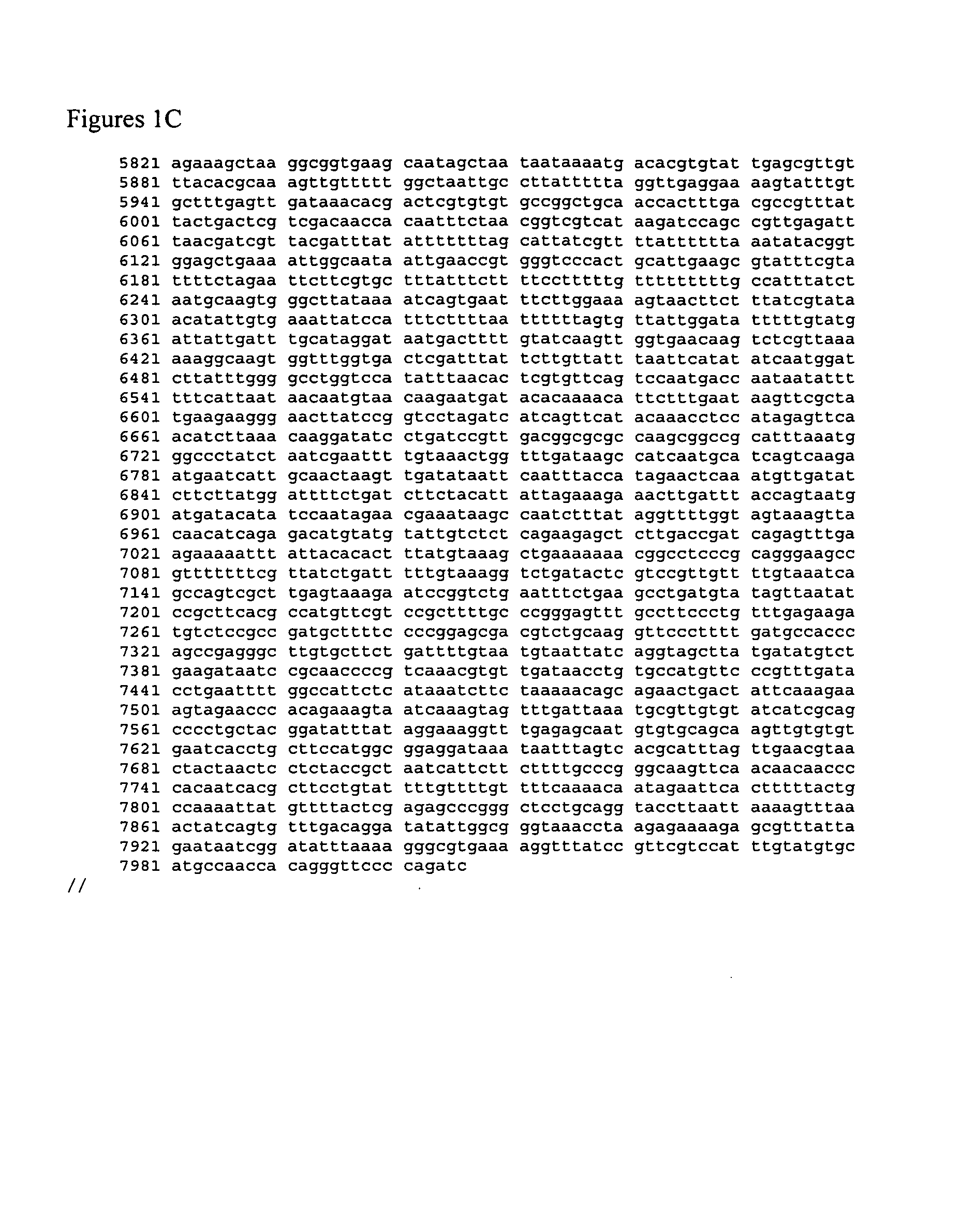Reproductive ablation constructs
a technology of constructs and reproductive tissues, applied in the field of reproductive development regulation, can solve the problems of reducing the vegetative affecting the growth and development of plants, and the promoters generally used for ablation are not well suited for tissue-specific expression,
- Summary
- Abstract
- Description
- Claims
- Application Information
AI Technical Summary
Benefits of technology
Problems solved by technology
Method used
Image
Examples
example 1
Isolation of Reproductive-Preferred Promoters
[0213]Reproductive-preferred plant promoters can be isolated from genomic and cDNA libraries. Using the sequence of a reproductive-preferred promoter as a probe, putative reproductive-preferred promoter sequences can be isolated. For example, an AGAMOUS (AG) promoter from P. radiata may be used as a probe for identifying other reproductive-preferred promoter sequences.
[0214]For example, genomic DNA was isolated from a male-bud from loblolly pine. Following isolation of the male-bud DNA, the P. radiata AG1 sequence was used as a probe for screening the male-bud genomic DNA isolated. Using a PCR-based screening approach, two putative loblolly pine AG promoter sequences were isolated, denoted LPAG1 (SEQ ID NO: 1) and LPAG2 (SEQ ID NO: 2). Each cloned LPAG promoter is about 1400 bp, including 600 bp of 5′ untranslated region, which contains the first intron of 139 bp of LPAG1 or LPAG2 gene.
[0215]The promoters were cloned using a “Genome Walke...
example 2
Methodology to Determine the Tissue Specificity of a Promoter
[0216]Following the identification and cloning of a promoter as described in Example 1, the promoter is operably linked with a reporter gene to determine those tissue types in which the promoter is active. To this end, a construct containing an inventive promoter is transformed into Agrobacterium tumefaciens by electroporation. Briefly, 40 μl of diluted AgL-1 competent cells are placed on ice and are contacted with about 10 ng of pART27 vector containing the promoter sequence. Electroporation is conducted under the following parameters:
Resistance=129 ohm
Charging voltage=1.44 kV
Field strength=14.4 kV / cm
Pulse duration=5.0 ms
[0217]Following electroporation, 400 μl of YEP liquid media is added and the cells are allowed to recover for one hour at room temperature. Cells then are centrifuged at 6000 rpm for 3 min and are resuspended in ˜50 μl YEP. Cell samples are spread over the surface of a YEP Kan50 / Rif50 plate, sealed with ...
example 3
Methods of Using a Reproductive-specific Promoter
[0224]Once a promoter having an appropriate tissue-specific and developmental pattern of expression is found, this promoter can be used to regulate a desired characteristic in a transgenic plant. In one embodiment, a tapetum-preferred promoter is used for regulating reproductive development in a plant. In this example, a tapetum-preferred promoter of the invention is operably linked to a gene encoding a cytotoxic protein. For example, a tapetum-preferred promoter may be operably linked to a gene encoding barnase. Expression of barnase in a reproductive-preferred tissue, such as the tapetum, may result in pollen ablation. European Patent Publication 344,1990.
[0225]To construct a transgenic plant having ablated male reproductive development, a fragment of barnase cDNA is operably linked in proper orientation to a reproductive-specific promoter of the invention and a nopaline synthase 3′ terminator. The entire construct is inserted as a ...
PUM
| Property | Measurement | Unit |
|---|---|---|
| temperature | aaaaa | aaaaa |
| temperature | aaaaa | aaaaa |
| melting point | aaaaa | aaaaa |
Abstract
Description
Claims
Application Information
 Login to View More
Login to View More - R&D
- Intellectual Property
- Life Sciences
- Materials
- Tech Scout
- Unparalleled Data Quality
- Higher Quality Content
- 60% Fewer Hallucinations
Browse by: Latest US Patents, China's latest patents, Technical Efficacy Thesaurus, Application Domain, Technology Topic, Popular Technical Reports.
© 2025 PatSnap. All rights reserved.Legal|Privacy policy|Modern Slavery Act Transparency Statement|Sitemap|About US| Contact US: help@patsnap.com



